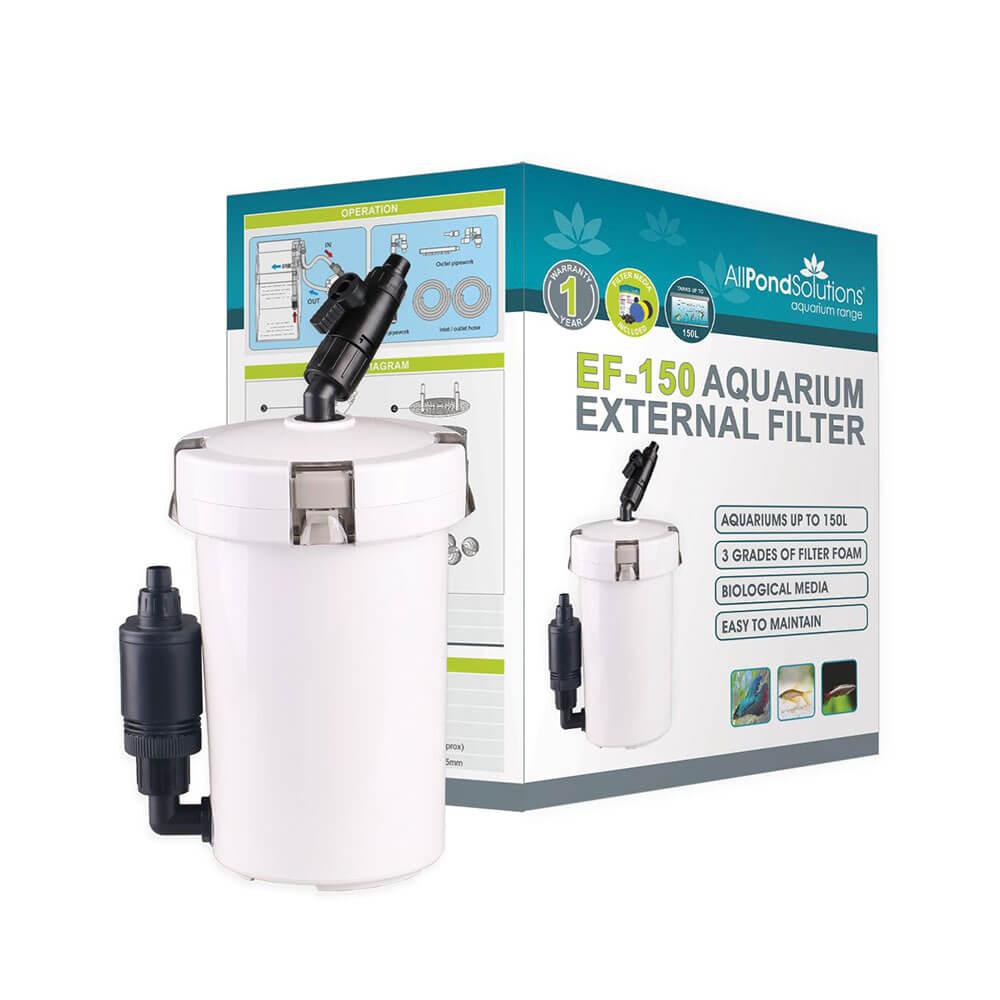How To Set Up A Marine Aquarium
Embarking on the journey to set up a marine fish tank is extremely exciting as you know that the finished product is going to be beautiful. However, they aren't as easy to put together as a tropical tank as they require different water conditions, additional equipment and extra measures to ensure that it is set up correctly.
Equipment
A marine fish tank requires more equipment than a tropical tank, you will need the following:
Marine lights
A Protein Skimmer
Filter System
Heater
Powerhead
Refractometer & Hydrometer
Sand/Substrate
Live Rock
Sump
Salt
Water Testing Kits
Aquarium Filtration
External filters are highly recommended for marine fish tanks, as they are able to filter larger volumes of water. Our top-selling EF1+, can easily be used in a saltwater setup. If space is not on your side, internal, corner and hang on filters could be the ideal alternatives for smaller aquariums. These compact internal filters provide both mechanical and biological filtration without taking up space outside of your aquarium.
Marine Fish Tank Lighting
To enhance the colour of your marine fish and to ensure that your coral survives, actinic (blue) marine lights are essential. You should not use freshwater lights as they will not provide the necessary kelvin for the survival of your tank. Fluorescent lights are cheaper and provide a clean colour in your water, but they also produce heat so you will need to closely monitor the temperature in your water if you choose to have these. LEDs are made up from assorted diodes and cover all the bases from ultraviolet to infrared.
Pumps / Powerheads
The surge of water created by a pump or wavemaker is important when keeping marine fish as it produces waves in your water. They enjoy the movement in the water as it replicates their natural environment and helps to keep the water moving for filtration purposes.
Heater
Almost all aquarium heaters are compatible with saltwater. You will need a heater that you attach inside your aquarium to achieve a temperature of 26 – 29°C.
Marine Aquarium Sump
A sump is not a requirement for a marine fish tank, but it will house your equipment making your set up look tidy and attractive. They are a separate tank that is plumbed into the setup of your aquarium.
Protein Skimmer
A Protein skimmer is essential for a marine aquarium, as it reduces the organic waste that is built up over time in a marine aquarium and sits in the sump of your aquarium. You need to place water in the sump first before adding the protein skimmer so it can fill up with water. Allow to run with the lid open for 3-4 days as a break in period and check the collection cup daily.
Saltwater Tank Gravel / Substrate
The preferred substrate in marine tanks is sand or crushed coral. This is what most saltwater livestock prefer and will benefit from. Live sand will assist with the filtration process and also helps keep the alkaline levels settled.
Live Rock
Live rock is one of the huge perks of owning a marine aquarium, as they have the versatility to produce a beautiful creation. However, they are more than just pretty decorations; they become the main biological filter of a marine tank. Live rock produces plenty of algae and bacteria that contribute to a healthy aquarium. However, you need to set up your aquarium with live rock and water and then allow it to cycle, the live rock should be part of this cycling process so that the benefits of having it can be fully appreciated.
Water Conditions
Purified water should be used for marine aquariums, and the salinity should be kept between 28-36 ppt and nitrates should be kept below 40ppm for fish or 10ppm for corals. Weekly water changes are key to maintaining nitrate levels as it means that they won’t be affected drastically. Before adding purified water, apply marine salt up to 1 hour before you put the water in your tank to allow it to dissolve so that the equilibrium of your aquarium isn’t affected. When it comes to adding salt to your water, you will need to add 35 grams per 4.9 ounces (0.14 litres). You should only need to add salt to the new water that you are putting into your tank, however, it is important to do regular checks using a hydrometer.
Hydrometers
Hydrometers will measure the salinity and gravity of your aquarium to ensure that your water is suitable for your fish and corals.
Cycling your tank
You will need to take all of the above steps and have your entire tank set up and ready to go, and then leave it cycling for at least six weeks before you are able to add any fish. This allows bacteria to grow so that your fish can live happily in the environment you have created for them. Not cycling your tank will cause issues when it comes to the health of your fish and live rock.
Testing Your Water
It is paramount that the water conditions are checked regularly in a marine fish tank, including the nitrate and salinity levels. We have a selection of marine treatments and test kits that are great for tanks with fish as well as coral. After at least 6 weeks of cycling your tank, you are ready to add your fish! Be sure to do plenty of research so that you know which fish will safely live together so that you are not causing distress to your livestock and to ensure the success of your tank.
